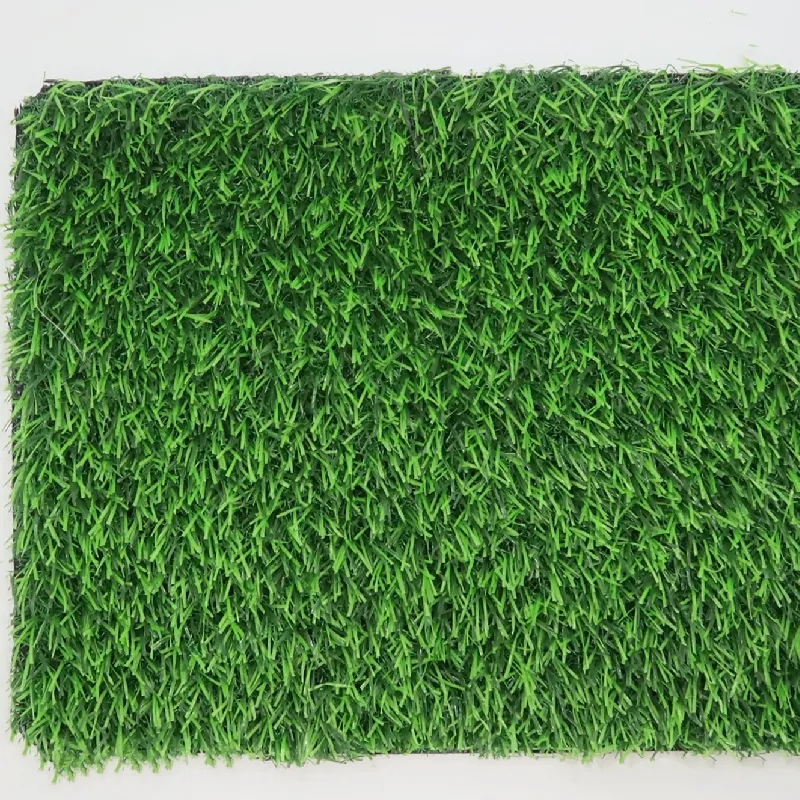
- Afrikaans
- Arabic
- Belarusian
- Bengali
- Czech
- Danish
- Dutch
- English
- Esperanto
- Estonian
- Finnish
- French
- German
- Greek
- Hindi
- Hungarian
- Icelandic
- Indonesian
- irish
- Italian
- Japanese
- kazakh
- Rwandese
- Korean
- Kyrgyz
- Lao
- Latin
- Latvian
- Malay
- Mongolian
- Myanmar
- Norwegian
- Persian
- Polish
- Portuguese
- Romanian
- Russian
- Serbian
- Spanish
- Swedish
- Tagalog
- Tajik
- Thai
- Turkish
- Turkmen
- Ukrainian
- Urdu
- Uighur
- Uzbek
- Vietnamese
The Benefits and Applications of Synthetic Lawns and Artificial Grass Solutions
Dec . 14, 2024 02:05 Back to list
The Rise of Synthetic Lawns Embracing Fake Grass for Modern Living
In recent years, the trend of synthetic lawns has gained tremendous popularity, transforming residential and commercial landscapes alike. Amid the growing concerns over water scarcity, environmental sustainability, and maintenance costs, many homeowners and businesses are opting for artificial grass as an effective alternative to natural lawns. This article explores the benefits and considerations associated with synthetic lawns, often referred to as fake grass.
The Evolution of Synthetic Grass
Synthetic grass has come a long way since its inception in the mid-20th century. Originally developed for sports fields, artificial turf was primarily made from nylon fibers and offered limited realism. However, advancements in technology have significantly improved the aesthetics and functionality of fake grass. Modern synthetic lawns now include a blend of polyethylene and polypropylene fibers that closely mimic the appearance and feel of natural grass. With variations in color, blade height, and texture, today’s artificial turf can be incredibly lifelike, making it a popular choice for homes, playgrounds, and sports facilities.
Environmental Benefits
One of the most compelling reasons for the surge in synthetic lawn usage is environmental sustainability. Traditional lawns require a considerable amount of water to maintain their lush appearance. In regions facing drought or water restrictions, the demand for water-efficient landscaping has never been more critical. Synthetic lawns eliminate the need for irrigation, thereby conserving millions of gallons of water each year.
Furthermore, artificial grass reduces the reliance on fertilizers and pesticides, which can have detrimental effects on local ecosystems. With no need for chemical treatments to combat pests, synthetic grass contributes to healthier soil and a reduction in pollution run-off. This eco-friendly choice aligns with the growing movement towards sustainable living.
Low Maintenance and Cost-Effective
synthetic lawns fake grass

Another advantage of synthetic lawns is the low maintenance they require. Unlike natural grass, which demands regular mowing, aeration, and fertilization, fake grass requires minimal upkeep. Homeowners save valuable time and resources; a simple rinse with a hose to remove debris is usually sufficient to keep synthetic grass looking pristine.
In the long run, the cost-effectiveness of synthetic lawns comes into play as well. While the initial investment may be higher than sowing natural grass, the savings on water bills, maintenance equipment, and labor can add up over time. Many homeowners find synthetic grass pays for itself within a few years, making it a smart financial choice.
Addressing Concerns
Despite the numerous benefits, some people raise concerns about synthetic lawns. One of the main issues is the heat retention of artificial grass, which can become significantly hotter than natural grass under direct sunlight. This concern is particularly relevant during hot summer months when children and pets play outdoors. However, many manufacturers are developing heat-resistant options and incorporating cooling technologies, which help mitigate this issue.
Another consideration is the environmental impact of producing and disposing of synthetic materials. Although modern fake grass lasts for over a decade with proper care, its eventual disposal can pose a challenge. Responsible manufacturers are now offering recycling programs to ensure old turf is repurposed, further reducing its eco-footprint.
Conclusion
As urbanization and climate challenges continue to alter our landscapes, synthetic lawns represent a practical solution for achieving beautiful, sustainable, and low-maintenance outdoor spaces. With their aesthetic appeal, water conservation benefits, and cost-effectiveness, synthetic lawns provide an attractive alternative to traditional grass. While it is essential to remain mindful of environmental implications, ongoing innovations in the field of artificial grass are paving the way for a greener future. Ultimately, fake grass is more than just a trend; it is a reflection of our evolving relationship with nature and our commitment to creating sustainable living spaces.
-
The Benefits of Artificial Turf for Indoors
NewsJul.15,2025
-
How Artificial Grass Suppliers Ensure Quality Products
NewsJul.15,2025
-
Artificial Grass and Pets: A Space for Relaxation
NewsJul.08,2025
-
Balcony & Outdoor Decoration with Artificial Grass
NewsJul.08,2025
-
Best Indoor Artificial Grass for Home
NewsJul.07,2025
-
Best Pet Turf for Dogs: Safe & Durable Artificial Grass Options
NewsJul.07,2025
Products categories









